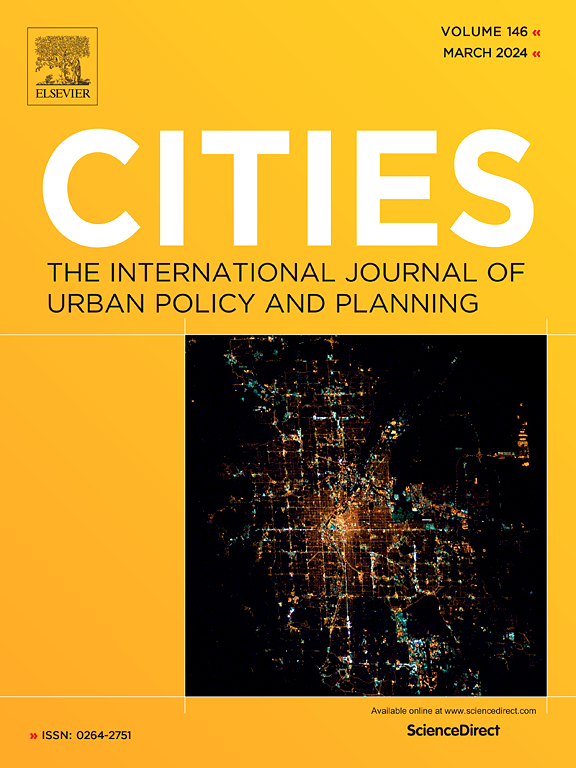Leveraging augmented reality for historic streetscape regeneration decision-making: A big and small data approach with social media and stakeholder participation integration
IF 6.6
1区 经济学
Q1 URBAN STUDIES
引用次数: 0
Abstract
Urban regeneration through digital and intelligent technologies offers a critical solution to the challenges arising in rapid urbanization, such as resource misallocation, the revival of cultural heritage, and the pursuit of high-quality development. Despite its potential, this approach has been underexplored in current research. This research focuses on a historic streetscape to develop a framework integrating big and small data for Augmented Reality (AR)-driven regeneration decision-making. For big data analysis, SnowNLP was employed to conduct text mining analysis on spatial perception patterns extracted from user-generated content across social media platforms such as Weibo and Xiaohongshu. For small data, a comprehensive AR spatial demand questionnaire is developed to analyze visitors' and experts' opinions. By integrating big and small data into a GIS platform, a unified database is constructed, and the Ordinary Least Squares (OLS) regression models are applied to assess the correlations between physical space elements and social media factors about AR demands. The findings indicate that the proposed research framework is highly feasible, revealing significant correlations between physical and social media elements and AR demands. Specifically, physical elements such as Scenic Spots and Government Agencies demonstrate strong correlations with AR demands. Likewise, the positive sentiment expressed on Xiaohongshu strongly correlates with increased AR demands. Furthermore, it is expected that findings from this study will be able to inform the relevant planning policies and strategies in AR-driven urban regeneration, offering theoretical foundations and practical guidance for creating digital and sustainable urban landscapes.
利用增强现实技术进行历史街景再生决策:结合社交媒体和利益相关者参与的大数据和小数据方法
通过数字和智能技术进行城市更新,是解决快速城市化带来的资源配置不当、文化遗产复兴和追求高质量发展等挑战的关键途径。尽管这种方法很有潜力,但在目前的研究中尚未得到充分的探索。本研究以历史街景为研究对象,为增强现实(AR)驱动的再生决策开发一个集成大数据和小数据的框架。在大数据分析方面,利用SnowNLP对微博、小红书等社交媒体平台上用户生成内容中提取的空间感知模式进行文本挖掘分析。对于小数据,我们开发了一个全面的AR空间需求问卷,分析游客和专家的意见。通过将大数据和小数据整合到GIS平台,构建统一的数据库,运用OLS回归模型评估物理空间要素与社交媒体因素对AR需求的相关性。研究结果表明,提出的研究框架是高度可行的,揭示了物理和社交媒体元素与AR需求之间的显著相关性。具体而言,景点和政府机构等物理元素与AR需求具有很强的相关性。同样,小红书上表达的积极情绪与AR需求的增加密切相关。研究结果将为ar驱动的城市更新的相关规划政策和策略提供参考,为创建数字化和可持续的城市景观提供理论基础和实践指导。
本文章由计算机程序翻译,如有差异,请以英文原文为准。
求助全文
约1分钟内获得全文
求助全文
来源期刊

Cities
URBAN STUDIES-
CiteScore
11.20
自引率
9.00%
发文量
517
期刊介绍:
Cities offers a comprehensive range of articles on all aspects of urban policy. It provides an international and interdisciplinary platform for the exchange of ideas and information between urban planners and policy makers from national and local government, non-government organizations, academia and consultancy. The primary aims of the journal are to analyse and assess past and present urban development and management as a reflection of effective, ineffective and non-existent planning policies; and the promotion of the implementation of appropriate urban policies in both the developed and the developing world.
 求助内容:
求助内容: 应助结果提醒方式:
应助结果提醒方式:


